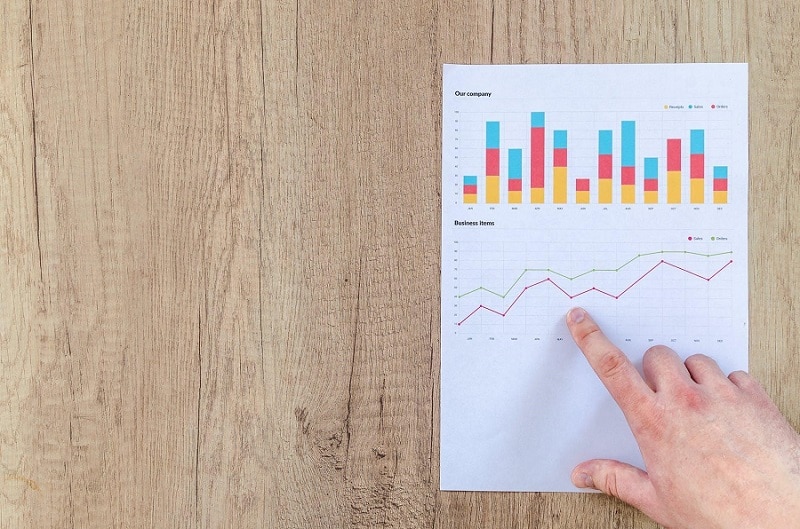What is First-party data?
Defining First-Party Data
First-party data is customer information a business gathers from its website, social media pages, apps, CRM tool, and surveys. First-party data includes:
- Customer buying behaviour
- Customer interests
- Demography
- Website visits and interactions
- Time engaged on the website, etc.
One survey revealed that since marketers have begun to increase their use of first-party data, they can gain many benefits from the insights they gather about their customers. For starters, first-party data is cost-effective because it can be gathered for free, and it meets GDPR. Also, the business owns the collected data because customers give their consent for the data to be collected. And when it comes to creating ads, businesses can use first-party data to create personalized and relevant ads for each customer.
Therefore, first-party data is a very valuable asset for a business to collect, and it can be monetized and segmented easily with the use of a Data Management Platform.
If you want to know more about the benefits of using first-party data and the difference between first-party, second-party and third-party data, read on.
Using First-party Data
First-party data allows businesses to provide website and app users a personalized experience while collecting valuable customer data and complying with privacy regulations. Therefore, companies can gain the following three benefits of using first-party data:
1. Valuable insights about your audience: Companies can use a DMP to integrate first-party data gathered from their website, apps, surveys, social media sites, games, etc. and create a more comprehensive profile of their customers. Businesses can use this integrated data to determine customer likes (and dislikes), customer product preferences and potential websites the customer will likely visit after leaving their website.
Marketers tend to use third-party data to create a comprehensive profile of customers. For example, if the marketer only has access to a customer’s email address, the marketer can integrate the email address with third-party data to discover information about the customer’s demography, purchasing habits and interests. This aggregated customer data proves to be highly useful when creating new campaigns.
2. An opportunity for better audience targeting: You can segment your users based on the information you gather from your first-party data. Then you can create audiences that have interests in similar products (or content topics) based on your web traffic data. Your marketing methods will improve because you can send your audience relevant messages. Click here for more information about audience targeting.
3. GDPR compliance: Businesses get a lot of value from their first-party data because it’s legal and reliable information. Businesses must get user consent to collect first-party data, which helps them follow GDPR changing regulations. Users usually don’t mind consenting to your business processing their data because it’s often needed when they want to make a purchase. So, if you need help in creating your consent disclaimer, your local law department can assist you with the wording you need when getting customer consent for their information and when explaining your privacy policy.
Collecting First-party Data
First-party data can be collected in a variety of ways. Google Analytics is one of the most popular ways to collect first-party data because it provides an analysis of your online traffic and provides customer insights. Another popular tool that’s used to gather first-party data is a Data Management Platform (DMP).
A Data Management Platform is a technological tool that helps you obtain and centralize your data. Your data allows you to gather customer insights and provide them with a unique brand experience. For example, you can create personalized ads to specific audience segments (including those that no longer visit your website).
The Difference Between First-party Data and Second-party Data
Now that we’re all clear on what first-party data is, let’s look at second-party data to see the difference between the two.
Second-party data is first-party data that a business buys from another company. This data is beneficial to a business because it can be used to expand your customer reach. First-party data is used to discover customer product interests. It is obtained from:
- apps
- websites mobile apps
- surveys
- social media platforms
Second-party data can be as simple as a car rental company using travel information from a booking website to create ads on the booking website for discount car rentals.
First-party data is the most trusted data a company can collect. With second-party data, a company cannot verify the value of the gathered information. Therefore, one drawback of second-party data is the inability to determine the data’s quality.
The Difference Between First-Party Data and Third-Party Data
Although first-party data is free (because you gather it from your platforms), third-party data is purchased from other businesses. Businesses can buy third-party data from data providers that get information from a variety of platforms around the world.
Businesses use third-party data such as demographic information, consumer interests and purchasing behaviour to supplement their CRM data, gain a 360-degree customer view, and expand their audience reach.
Integrating first-, second- and third-party data on a DMP
Marketers often use a Data Management Platform to integrate, analyse and gain better insights about all customer data. That way, businesses achieve a 360-degree customer view. Also, if businesses want to segment data, the DMP helps them accomplish this.


























